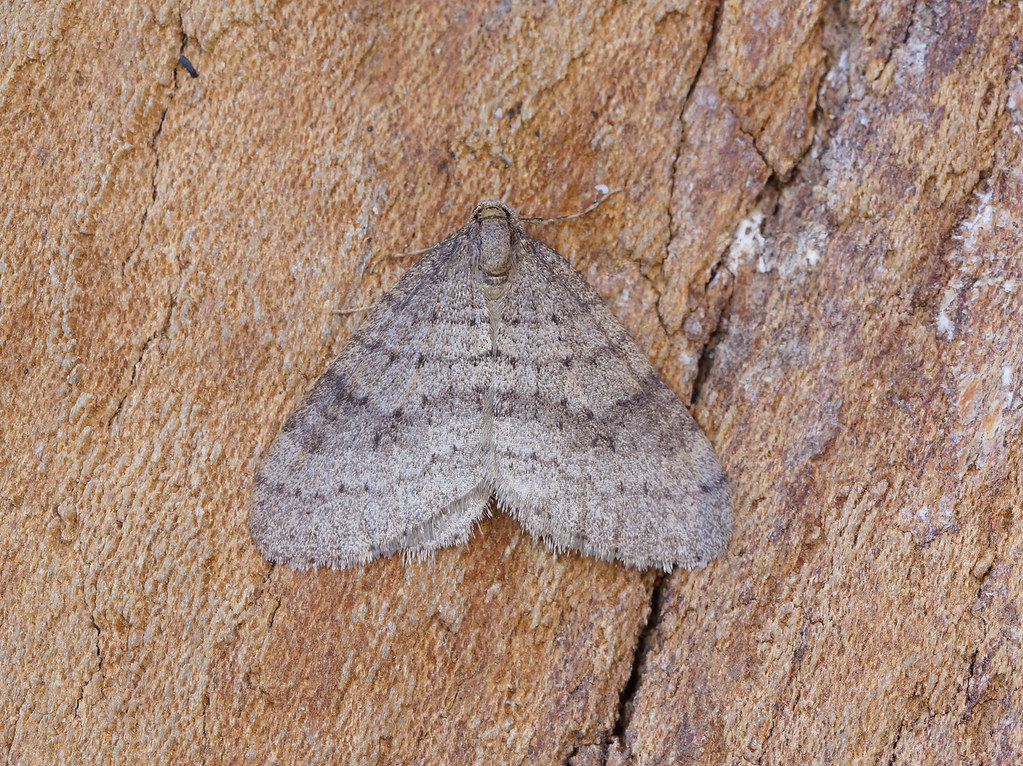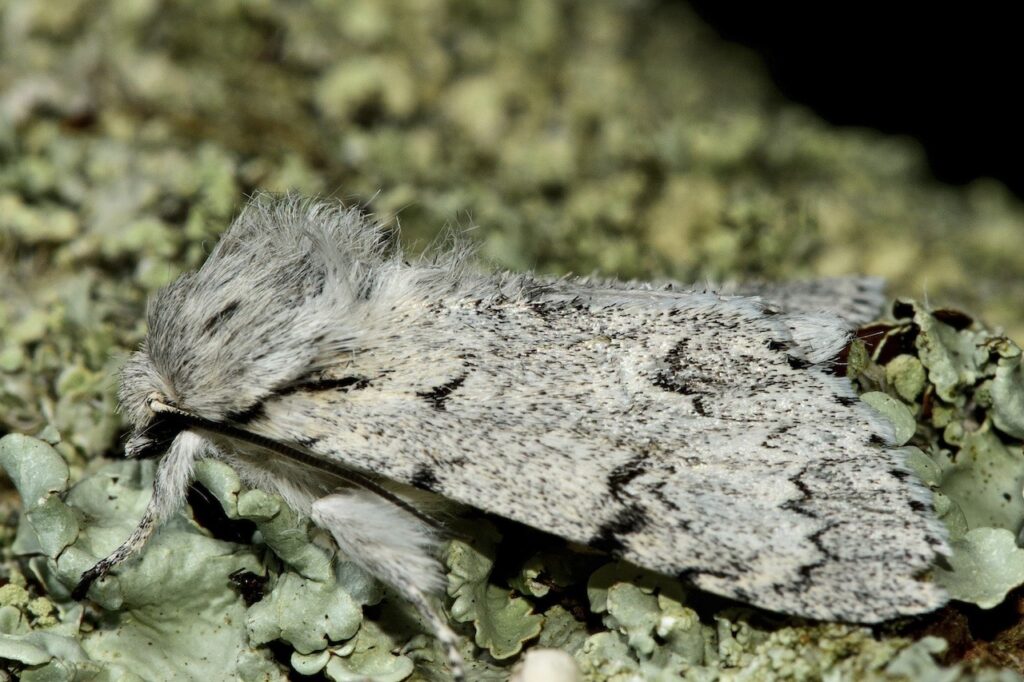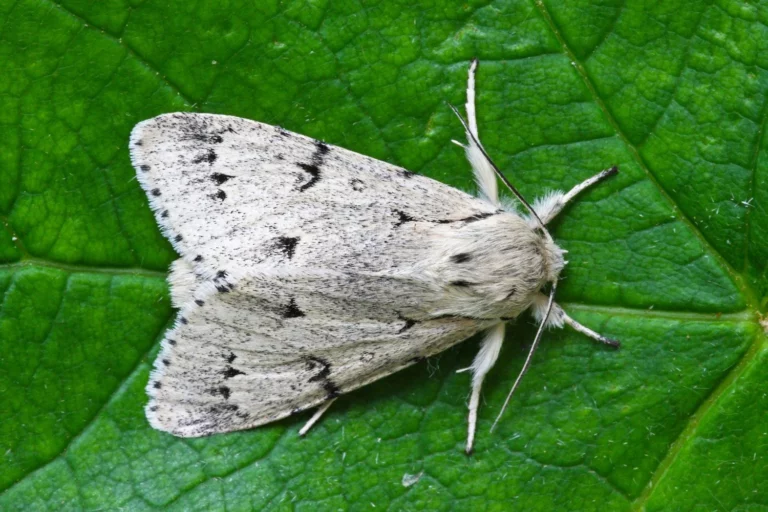Miller moths are not poisonous to dogs, but ingesting a large number of them can lead to gastrointestinal upset or, in rare cases, allergic reactions. Dogs should be monitored around moths, and if they ingest a significant quantity or exhibit distress, contact a veterinarian. Additionally, be cautious of moths that may have come into contact with pesticides or chemicals.
What are Miller moths like around dogs?
It’s important for dog owners to be aware of these common encounters and understand the potential risks associated with their pets interacting with Miller moths, as discussed in the subsequent sections of the outline.
Description of Miller Moths (Euxoa auxiliaris)
Species Identification: Miller moths, scientifically known as Euxoa auxiliaris, belong to the Noctuidae family of moths. They are also commonly referred to as army cutworm moths.
Miller moths are typically medium-sized moths with wingspans ranging from 1.5 to 2 inches. They are known for their distinct appearance, featuring mottled gray or brown wings with distinctive markings.
Moreover, these markings can vary, but they often include lines, spots, and sometimes even hints of pink or yellow on the hindwings.
Understanding the life cycle of Miller moths is essential. They start as caterpillars, known as cutworms, which can be agricultural pests.
These caterpillars feed on various plants and can potentially harm crops. After the caterpillar stage, they pupate and eventually emerge as adult moths.
Common Encounters between Dogs and Miller Moths

Miller moths are frequently encountered by dogs during specific seasons, typically in late spring and early summer. This period coincides with their migration from their overwintering grounds in the plains to higher elevations in search of more favorable conditions.
Moreover, miller moths are often drawn to light sources at night. They may congregate around outdoor lights, porch lights, or even indoor lamps. This attraction to light sources can lead to dogs showing interest in chasing or catching them.
Dogs are naturally curious animals, and when they notice moths fluttering around, they may become intrigued and attempt to catch or play with them.
In addition, dogs that spend time in outdoor environments, especially in regions where Miller moths are abundant, are more likely to encounter these moths. This is especially true in areas where agriculture is prevalent, as Miller moths can be agricultural pests.
While dogs may not intentionally consume Miller moths, accidental ingestion can occur during play or if they are overly enthusiastic in their attempts to catch the moths.
Why are Miller moths safe for dogs?
Miller moths, like many other insects, do not possess natural defense mechanisms that involve producing toxins or harmful chemicals. Unlike some species of butterflies or other insects that may secrete toxins as a means of defense, Miller moths rely on camouflage and flight to evade predators.
Furthermore, the primary defense strategy of Miller moths is to blend into their surroundings during the day by resting in areas that provide natural camouflage, such as the bark of trees or the ground. Their mottled wing patterns help them avoid detection while at rest.
Moreover, miller moths do not have stingers or venomous structures that could pose a direct threat to potential predators, including dogs. They are primarily herbivorous in their larval stage and do not have any means of injecting toxins into their surroundings.
Absence of inherent poison in Miller Moths
Miller moth larvae, known as cutworms, primarily feed on plant matter, especially the leaves and stems of various crops and plants. Their diet consists of vegetation and does not involve consuming toxic substances.
The adult Miller moths, which are the ones dogs are most likely to encounter, typically do not feed at all or consume only minimal amounts of nectar or similar substances. They do not have specialized adaptations for capturing prey or injecting poison.
Furthermore, miller moths do not secrete or exude any poisonous substances from their bodies. Their focus is primarily on reproduction and migrating to more suitable habitats.
In general, if humans or animals come into contact with Miller moths, there is no inherent risk of poisoning. This makes them a relatively safe insect to handle.
What are the risks of dogs eating moths?
Understanding these potential risks associated with dogs and moths is essential for responsible pet ownership.
When dogs ingest a large number of moths, especially if they are overly enthusiastic in their consumption, it can overwhelm their digestive system.
Moths have exoskeletons that can be challenging to digest, and the accumulation of these indigestible parts can lead to gastrointestinal discomfort.
The chitin in the exoskeletons may cause irritation in the stomach lining, potentially resulting in vomiting and diarrhea.
Common symptoms (vomiting, diarrhea, discomfort)
- Vomiting: Dogs may vomit as a natural response to rid their stomachs of indigestible or irritating substances, such as moth parts.
- Diarrhea: Consuming moths can disrupt the normal balance of bacteria in the intestines, leading to diarrhea.
- Discomfort: Dogs that have consumed moths may exhibit signs of abdominal discomfort, including restlessness, pacing, or whining.
Allergic Reactions
Discussion of allergies or sensitivities in some dogs:
Just like humans, dogs can develop allergies or sensitivities to various substances, including insect proteins.
Some dogs may have an immune system response to components of moths, leading to allergic reactions.
Signs of allergic reactions (itching, swelling, hives, breathing difficulties)
- Itching: Allergic dogs may scratch or chew at their skin, ears, or paws as a response to the allergen.
- Swelling: Allergic reactions can lead to facial swelling, especially around the eyes or muzzle.
- Hives: Raised, itchy bumps on the skin (hives) can develop in response to an allergen.
- Breathing Difficulties: In severe cases, dogs may experience difficulty breathing, which is a medical emergency requiring immediate attention.
Risk of Secondary Issues
Consideration of potential exposure to pesticides or chemicals:
Moths encountered by dogs may have come into contact with pesticides or other chemicals if they were in areas where pest control measures are used.
Ingesting moths that have been in contact with pesticides can lead to poisoning or other adverse reactions in dogs.
Importance of assessing the environment
Pet owners should be vigilant about where their dogs encounter moths, especially in agricultural areas or places where pesticides are applied.
Moreover, ensuring that outdoor environments are safe and free from potential hazards is crucial to protecting the health of pets.
Physical Harm
Mention of the possibility of dogs injuring themselves while chasing moths:
Dogs are instinctive hunters and may become highly excited when chasing moths.
During these chases, they may collide with objects, fall, or engage in behavior that could result in physical injury.
Rareness of this occurrence
While the risk of physical harm from chasing moths exists, it is relatively rare. Most dogs do not injure themselves while pursuing moths.
However, pet owners should still exercise caution and provide a safe environment for their dogs to play and explore.
How can dogs be protected from moth consumption?

By taking these monitoring and precautionary measures, pet owners can help ensure their dogs’ safety and well-being when it comes to interactions with moths and other potential environmental hazards.
Advice on monitoring dog’s interactions with moths
Whenever dogs are in environments where they might encounter moths, it’s advisable to supervise their activities closely. This allows you to intervene if they become overly fixated on chasing or consuming moths.
Watch for changes in your dog’s behavior. If they show excessive interest in moths or engage in frantic chasing, it may be time to redirect their attention to a safer activity.
Since moths are often attracted to light sources at night, consider limiting your dog’s access to outdoor areas with intense lighting to reduce their exposure to moths.
Basic obedience training can be helpful. Teaching commands like “leave it” or “drop it” can be invaluable in situations where your dog encounters moths or other potentially problematic items.
Steps to prevent dogs from consuming large quantities of moths
Use screens on windows and doors to prevent moths from entering your home, reducing the likelihood of indoor encounters.
Adjust outdoor lighting to be less attractive to moths. For example, consider using yellow or sodium vapor bulbs that are less appealing to insects.
Keeping your dog well-groomed can reduce their susceptibility to skin irritations or allergies resulting from contact with moths.
Provide alternative forms of entertainment and mental stimulation for your dog to redirect their attention away from moths. Interactive toys, puzzle feeders, and playtime can be effective distractions.
If you notice that your dog has a persistent obsession with moths or other insects, consult a veterinarian or animal behaviorist for guidance on managing this behavior.
FAQ’s
What is the difference between a moth and a Miller?
A “Miller” is not a distinct type of moth; it’s a common name for various moth species. So, all Millers are moths, but not all moths are specifically referred to as Millers.
Why are moths called Millers?
Moths are often called “Millers” due to their behavior of flying around lights at night, which can resemble the dusty appearance of a miller’s clothing.
What color are Miller moths?
Miller moths can vary in color, but they often have mottled gray or brown wings with distinctive markings.
Why do moths fly at faces?
Moths are drawn to sources of light, and they may fly at faces or other light sources due to a phenomenon called positive phototaxis.
Is my moth a boy or girl?
Distinguishing the gender of a moth typically requires close examination of specific physical characteristics, such as antennae or abdomen shape, depending on the species.
Are moths color blind?
Moths do not see colors in the same way humans do. They have limited color vision and are more sensitive to ultraviolet light.
What color is a moon moth?
Moon moths, also known as Luna moths, are typically pale green with distinctive long tails and eyespots on their wings.
Final Thought
In conclusion, understanding the interaction between dogs and Miller moths is crucial for responsible pet ownership. Miller moths themselves are not inherently poisonous, but certain risks accompany their encounters.
Pet owners should be aware of potential gastrointestinal upset and allergic reactions that can result from the consumption of moths in large quantities.
Additionally, considering the environment in which moths are encountered, especially with regard to pesticide exposure, is essential for a dog’s safety.
Monitoring a dog’s behavior around moths, taking precautionary measures to prevent excessive consumption, and promptly contacting a veterinarian when necessary are key steps in ensuring the well-being of our canine companions.
By staying informed and vigilant, pet owners can help their dogs enjoy a safe and enriching experience, even in the presence of these common insects.

